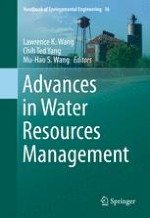2016 | OriginalPaper | Buchkapitel
4. Hydraulic Fracturing and Shale Gas: Environmental and Health Impacts
verfasst von : Hsue-Peng Loh, M.L.S., Ph.D., Nancy Loh, M.A.
Erschienen in: Advances in Water Resources Management
Aktivieren Sie unsere intelligente Suche, um passende Fachinhalte oder Patente zu finden.
Wählen Sie Textabschnitte aus um mit Künstlicher Intelligenz passenden Patente zu finden. powered by
Markieren Sie Textabschnitte, um KI-gestützt weitere passende Inhalte zu finden. powered by
